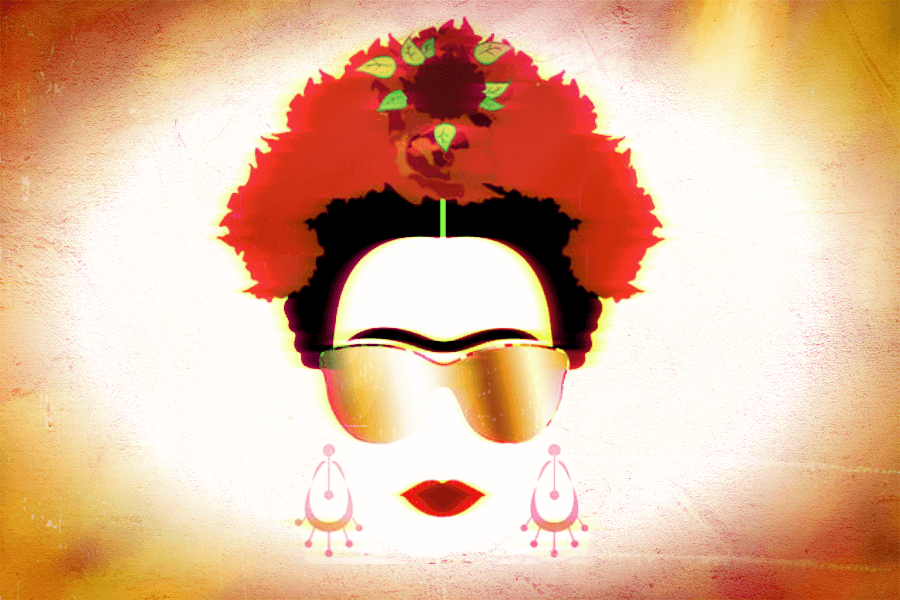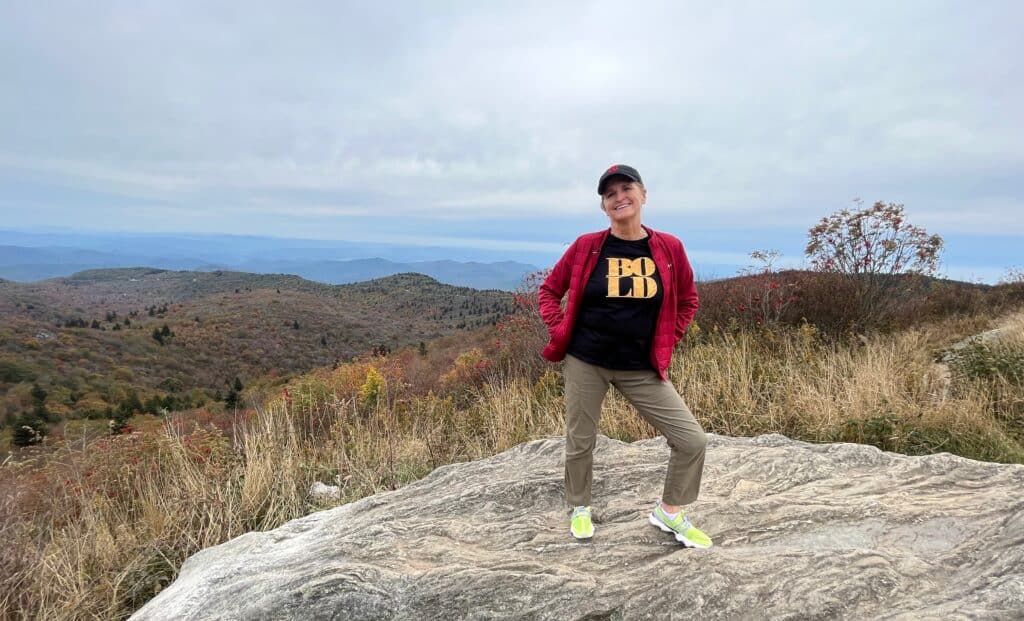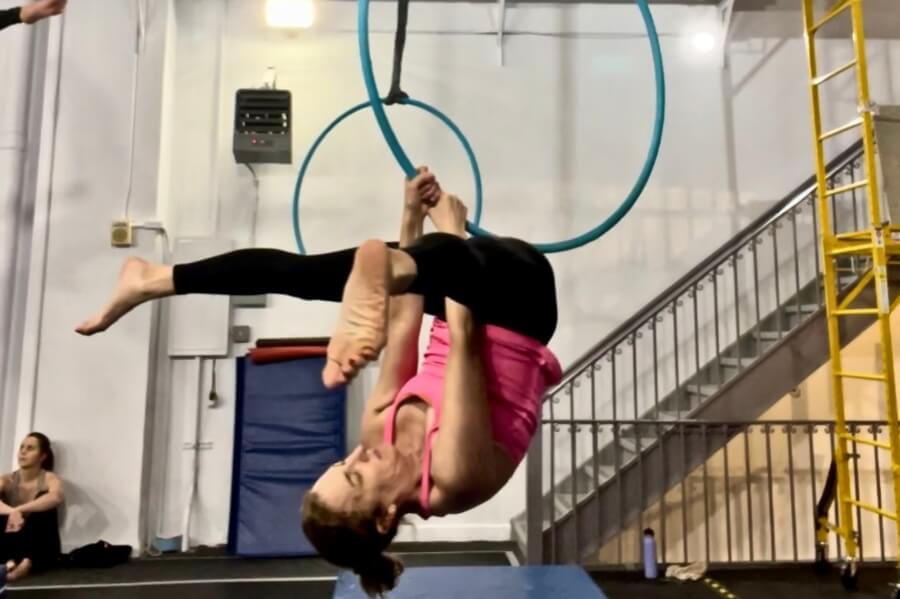Editor’s Note: A new book on the complete works of Frida Kahlo that we included in our Gift Guide made us think about this iconic artist and how she modeled bad-assery way before women did such things. Here’s a favorite NextTribe story about her inspiration.
***
If you were to inventory my collection of Frida Kahlo swag—eyeglass cases, socks, faded ticket stubs from multiple viewings of the 2002 biopic that bears her name—you’d have cause to wonder whether I’m a bit of a Frida fanatic. The answer would be sí.
Ever since I was introduced to Kahlo as a romantic, wannabe fashionista, poetry-writing rebel, I worshipped her wild mind, wild outfits, wild romances, and wild dedication to the downtrodden, as much as I admired her wild work. I was captivated by her evident commitment to being full-force Frida: her stubborn refusal to capitulate to anyone or anything that might make her one bit smaller than she was, including her case of crippling childhood polio and then, at 18, a bus accident that condemned her to 30 surgeries and a life of relentless pain.
I’ve been captivated by her stubborn refusal to capitulate to anyone or anything that might make her one bit smaller than she was.
So when I happened to be in London for a friend’s wedding in July, and I learned that the Victoria & Albert Museum was hosting an exhibit called “Frida Kahlo: Making Her Self Up,” I jumped on an iconic red double-decker and rode it all the way to the end of the line. Disembarking, I discovered that in my haste, I’d sent myself to the wrong museum. The bobby on the steps of the magnificent but Frida-less National Gallery waved me into the far distance, advising me to take the tube or (on the off-chance he was talking to a spoiled American) one of those iconic black cabs.
Read More: Telling the Story of Women’s Rights, The Glorias Recharges Feminist Batteries
Finding Frida Kahlo
The two-mile walk will only add to the day’s charm, I told myself. Never mind that the day in question was the hottest ever in London’s rather lengthy history. Never mind that the minor back surgery I’d had weeks before, in hopes of walking London Bridge without falling down, had actually dialed up my suffering from a manageable four to a nerve-grinding eight. Me being me, against the bobby’s orders, I set off on foot.
Me being me, I set off on foot.
Imagine me, then, two hours later, arriving at the V&A: pale with pain, drenched in sweat, an extra-strength Advil stuck in my parched throat. I dragged myself up the regal stone stairs, presented myself to the straight-out-of-Central-Casting, blue-haired, violet-scented ticket-seller, and croaked, “One for Frida, please.”
Museum Lady shook her head. “I’m afraid that exhibition is entirely sold out.”
“Nooooo,” I hollered, neglecting to use my inside voice.
“Unless…” Museum Lady leaned in close. “Unless you buy a one-year museum membership. In which case I could get you in right now.”
“A Ribbon Around a Bomb”

Fans wait in the line for the Frida exhibit at the Faberge Museum in St. Petersburg, Russia, 2016.
Freelance finances be damned. This was Frida Kahlo. I handed over a fistful of pounds and started elbowing my way through an overcrowded, underground warren of Frida-ness. Here she was with her on-again/off-again husband, the revolutionary muralist Diego Rivera, who was twice her age and three times her weight. Here she was with her many other male and female lovers, Leon Trotsky and Josephine Baker among them. Here were Frida’s huipiles and shawls, her flowing skirts, chunky beads, and elaborate floral head wraps; her delicate frosted perfume bottles—the whole Frida package that once moved a male detractor to describe her trademark appearance as “a ribbon around a bomb.”
And here were Frida’s leg braces, special shoes, and prostheses. Here were the special bed-easel and the canopy-mounted mirrors, beneath which Frida made 143 paintings—55 of them self-portraits—before she died of her injuries at 47 years old.
Suddenly, my reverie was invaded by the angry voice that had chased me through my misunderstood childhood.
I gazed at the paintings in which Frida depicts herself as two selves, outer and inner, erect and crumbling, ecstatic and destroyed, shifting my weight from one leg to the other, trying to give my aching back a break.
Suddenly, my reverie was invaded by the angry voice that had chased me through my misunderstood childhood. (“Restrain your exuberance, Meredith!” my first-grade teacher bellowed on the regular, grading me “Unsatisfactory” in “Behavior” on every report card that year.) The voice that echoed through my utterly alienated adolescence, featuring multiple high school suspensions and ultimate expulsion from school and the family domicile, all for refusing to ignore the racism, the misogyny, the hypocrisies, the war. It was the hostile voice, the punishing message that sometimes dogs me still. Sit down. Quiet down. Bow down. Do it the way it’s done, not the way you imagine doing it. Color within the lines.
Resisting the Call to Conform
“Your back wouldn’t hurt so badly right now if you’d taken the bobby’s advice,” that voice chastised me. “Why won’t you ever do the reasonable thing?”
But if I’d taken the bobby’s advice, I defended myself to myself, I wouldn’t have been delighted by the window boxes along my route, each one a riot of purple pansies and red geraniums. I wouldn’t have met the cravat-wearing proprietor who ushered me into his cigar store for a restorative rest in his chilled air and deep leather chair. I wouldn’t have stumbled upon the changing of the guard, found the vintage lawn-bowling shirt in the charity shop, tasted the local ginger beer, or heard the shifting language and accents as I trudged through one neighborhood and then the next.
What if each of us pursued her passions, obeyed only her instincts, defied that angry voice of social pressure and constraint?
What if Frida had done the reasonable thing, bowed down, colored within the lines? We wouldn’t have “The Two Fridas” or “The Broken Column” or the role model of a woman who defied the rules of compulsory gender, monogamy, beauty, capitalism, and physical well-being in favor of fully living her one brief, wild life. What if our other wonder women, who lived so big and left us so much, had done the reasonable thing, sat down, quieted down? What would our world be like without the legacies left to us by Maya Angelou, Simone de Beauvoir, Ruth Bader Ginsburg, Emma Goldman, Helen Keller, Georgia O’Keeffe?
Final question—most important question. What if, despite pain of all sorts and judgments of all sorts, every one of us lived her biggest, best, wildest life, starting now? What if each of us pursued her passions, obeyed only her instincts, defied that angry voice of social pressure and constraint? What could each of us do for ourselves? What could each of us do for the world if we lived like Frida Kahlo? And what will we lose, what will the world lose, if we don’t?
Read More: Barbra Streisand Puts Her Money Where Her Beliefs Are: A New Social Issues Institute
***
A version of this story was originally published in September 2018.
Meredith Maran has published more than a dozen books, including The New Old Me, Why We Write About Ourselves, Why We Write, My Lie, and A Theory of Small Earthquakes. She writes book reviews, op-eds, essays, and features for The New York Times, The Washington Post, The Christian Science Monitor, The Los Angeles Review of Books, The Rumpus, and Salon.





















0 Comments